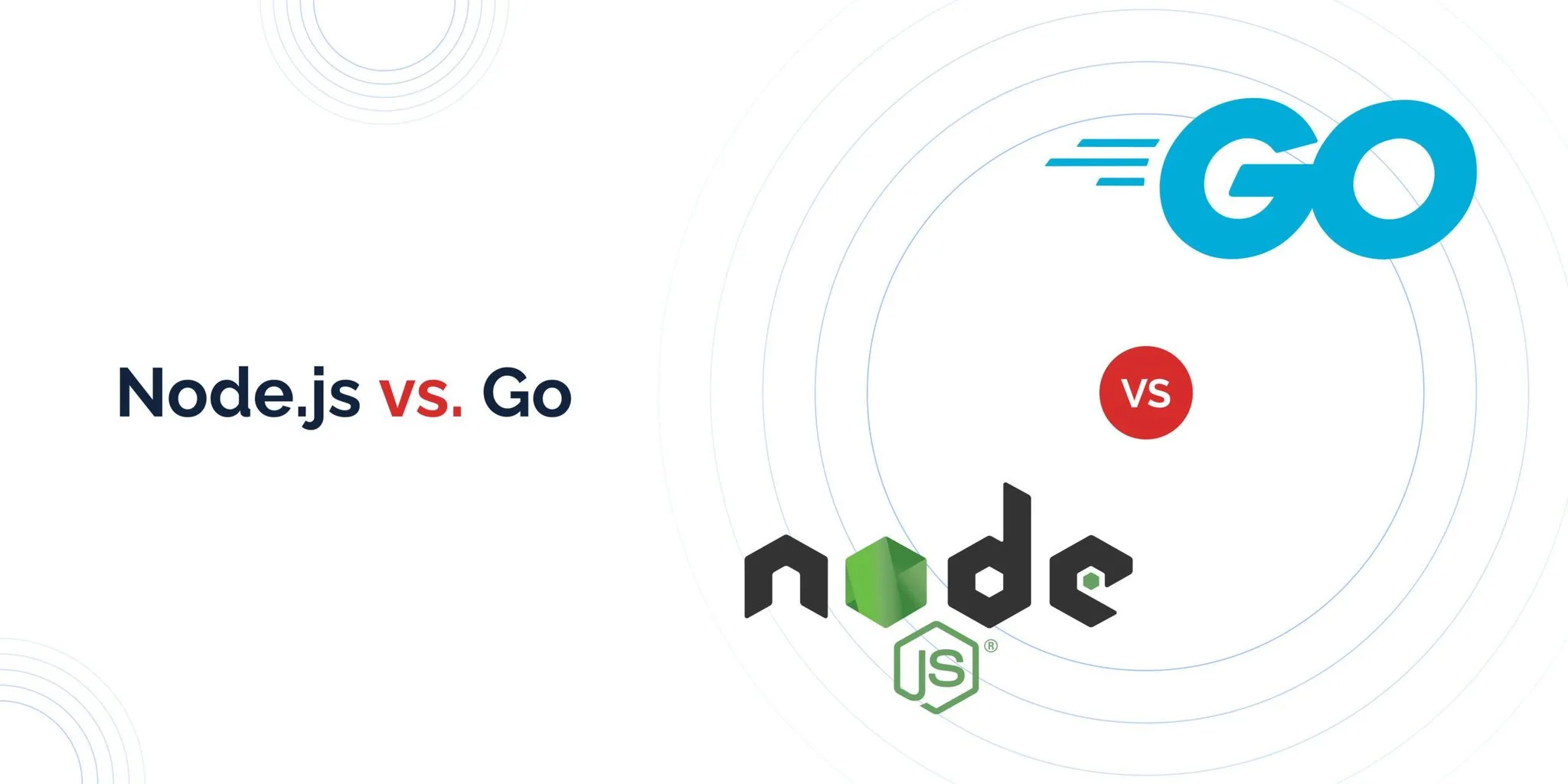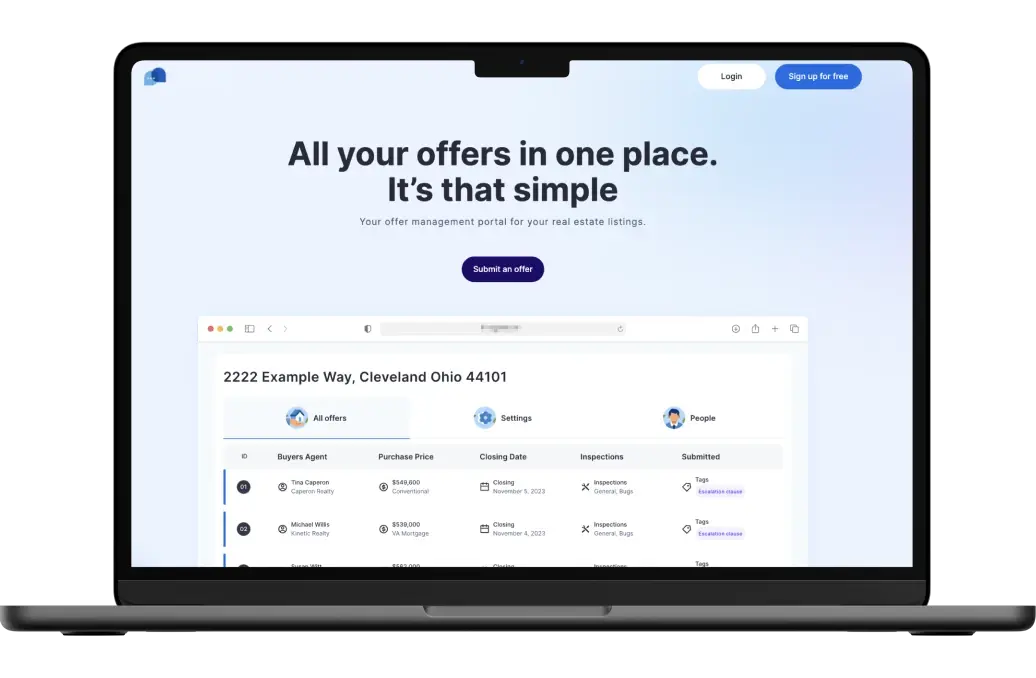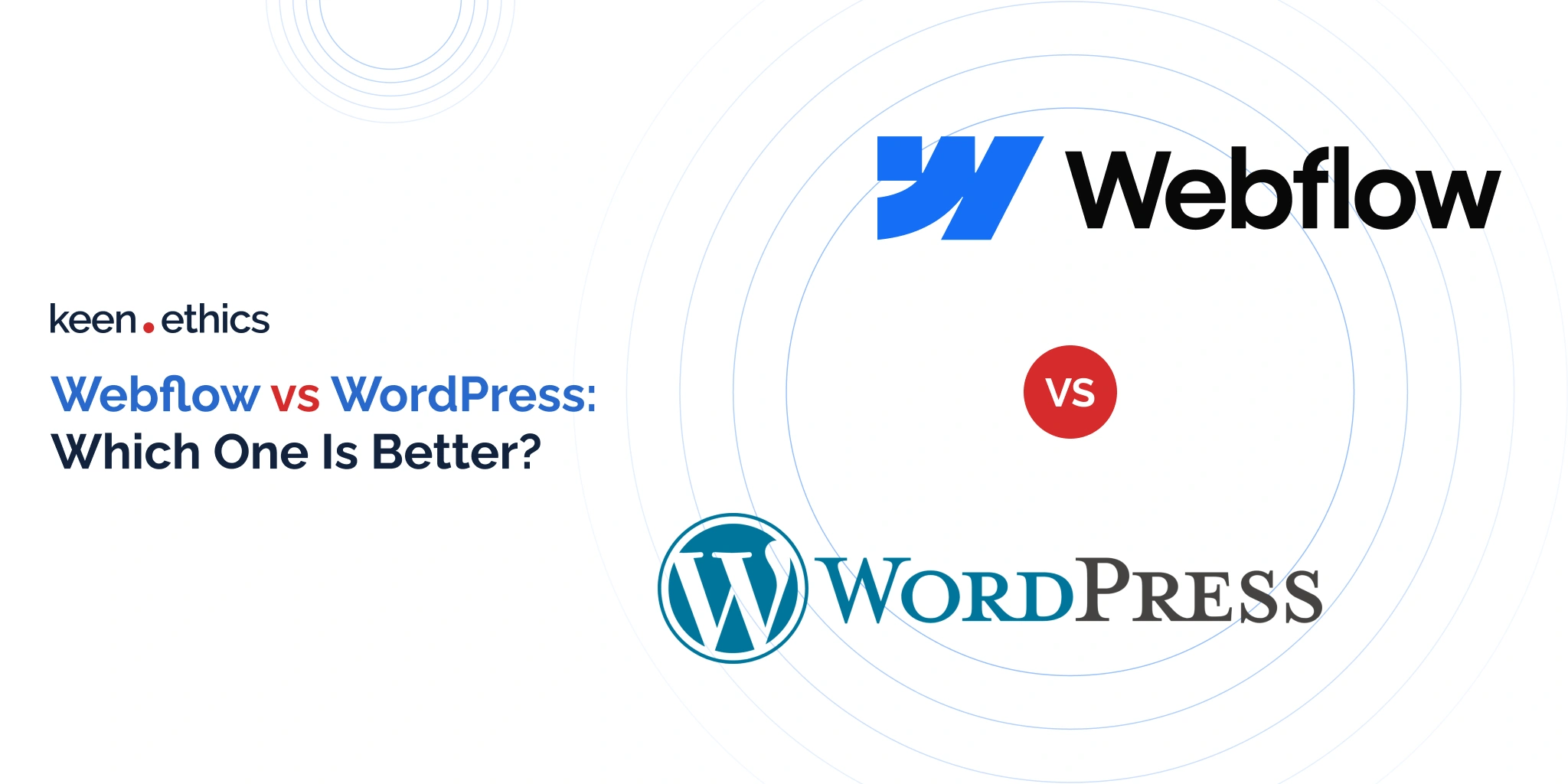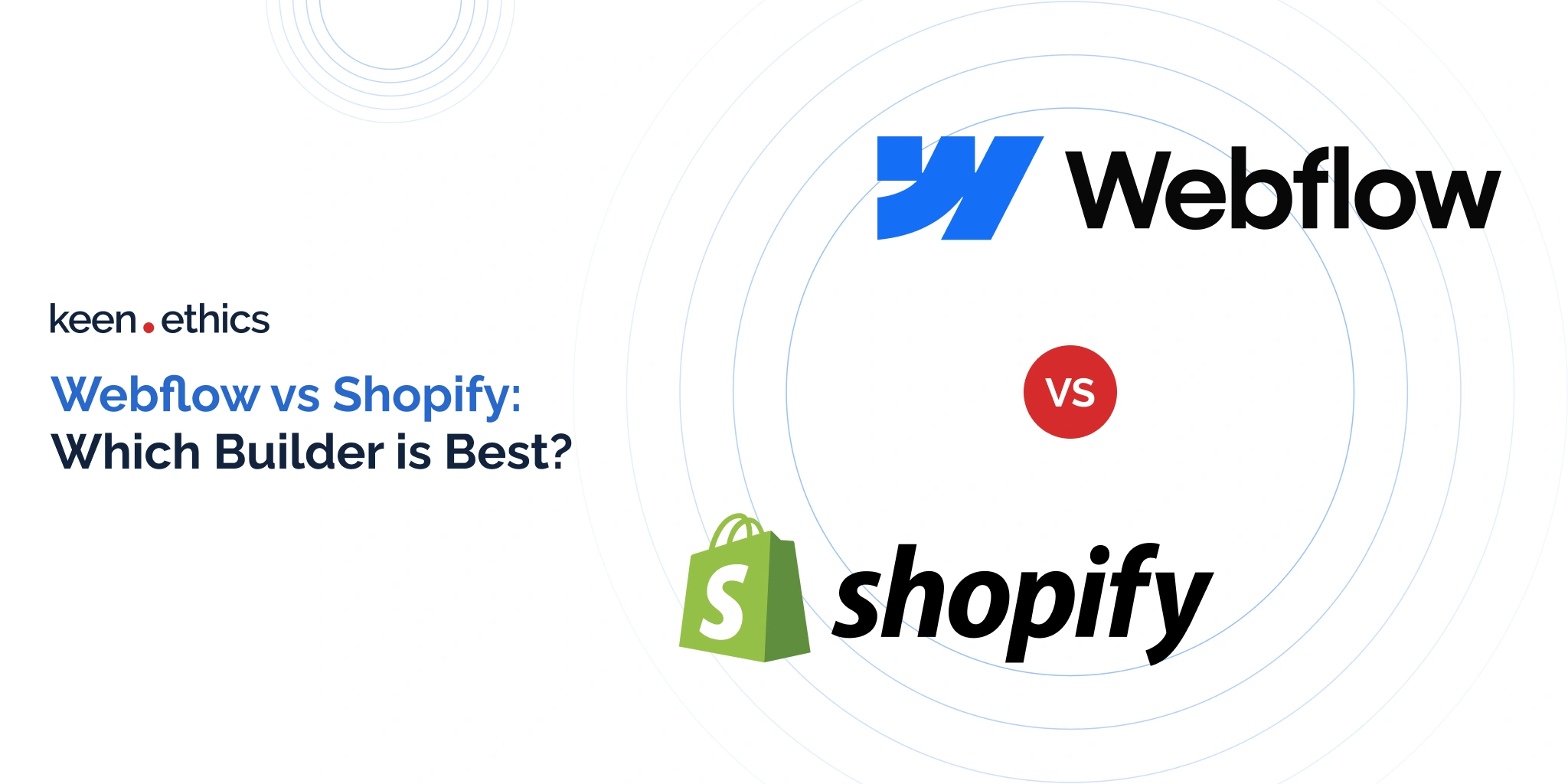Choosing the best technology for back-end development
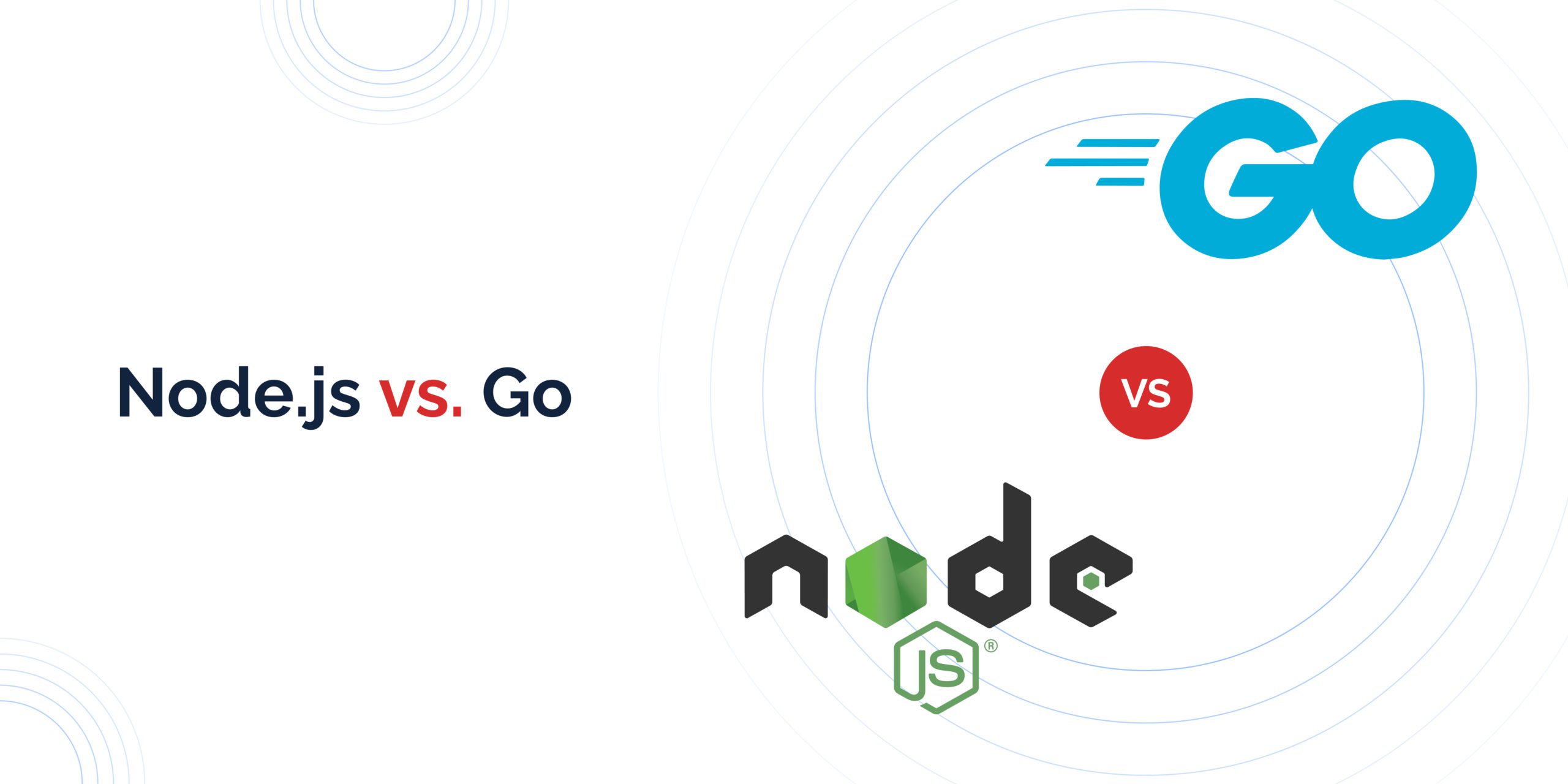
Have you ever wondered what to choose for back-end web development: Node.js or Go? The very process of web development involves two parts. One part which a user can see, and the other part which remains unseen. That is why this part that can’t be seen is known as “back-end”.
There are many technologies that can be used for back-end development. For example, Go and Node.js are among those technologies. Both technologies are relatively new, though they managed to gain significant popularity over the years. There are different reasons for this.
In this article, you will find out the essence of both Node.js and Go. Also, we will try to explain the main benefits of using each of the technologies as well as indicate their main drawbacks. This way, you may decide the winner between Node.js and Go for yourself.
What exactly is Node.js?
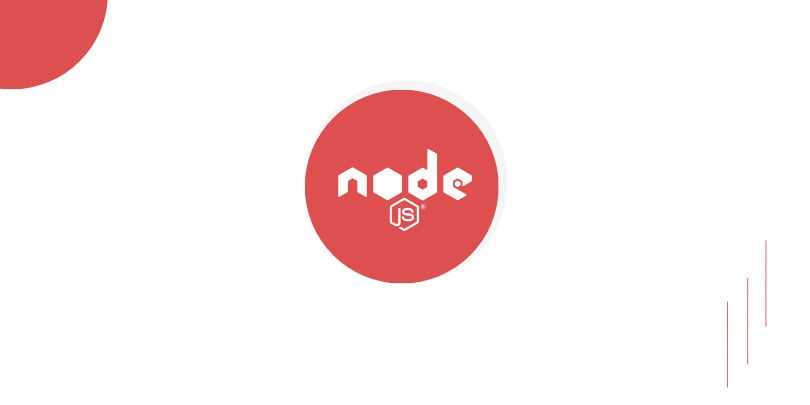
Node.js is an open-source run-time environment which came out in 2009. This open source server framework can run on many platforms. They include Mac OS X, Windows, Linx, and Unix. Besides, Node.js is built on Google Chrome’s Javascript Engine. This platform uses JavaScript on the server and is believed to be simple for web development.
Due to the fact Node.js has gained significant popularity over the last couple of years, it also obtained many users. Among them are eBay, General Electric, Microsoft, PayPal, Wikipins, Yahoo!, Uber, and many others. In addition, the number of companies that decide to use Node.js in their projects is increasing each year.
There are many ways in which Node.js can be used. Some of the areas in which this technology might be applied are I/O bound Applications, Data Streaming Applications, Data Intensive Real-time Applications (DIRT), JSON APIs based Applications, and Single Page Applications. Yet, Node.js may be ineffective in dealing with CPU intensive applications.
Features of Node.js
Node.js has a couple of features which make it stand out among other technologies. The main are the following:
- Fast. Node.js is believed to be fast in code execution. This is primarily connected to its linkage to Google Chrome’s V8 JavaScript Engine.
- Absence of buffering. The apps written in Node.js are known for never buffering any data. Instead, Node.js apps output the data in chunks.
- License. The main feature of Node.js is that it came out under the MIT license.
- Asynchronous. APIs of Node.js are non-blocking. In other words, the server does not have to wait for an API to return data.
What is Go?

As the official website for this programming language suggests “Go is an open source programming language that makes it easy to build simple, reliable, and efficient software.” Also, this language was released relatively new. According to Tutorialspoint, “Go language is a programming language initially developed at Google in the year 2007 by Robert Griesemer, Rob Pike, and Ken Thompson.”
This programming language is used in many Google’s production systems. The main significance of Go is that it is praised for its advanced performance for networking. In addition, it has a number of other advantages which make this programming language outstanding among others. Probably, that is why Business Insider called Go “the hottest programming language of 2016.”
On the whole, many developers prefer choosing this particular programming language since it is known for its high security, high speed, and high modularity as well. Moreover, many programmers suggest that Go is very similar to C in terms of syntax. Yet, Google’s Go can safely use memory as well as provide static typing along with concurrency.
Advantages and Disadvantages of Node.js and Go
Despite the fact, both Node.js and Go are popular technologies, they are unique and thus have both advantages and disadvantages over one another. Let’s look at the main differences between them.
Advantages of Using Node.js
To begin with, there are many advantages of Node.j which explains why programmers love working with this technology. So, the main advantages of Node.js are the following:
- Flexibility. In Node.js, one node is affected, when you decide to make any change. However, in other runtime environments, you would have to make changes all the way back to the core programming.
- High Performance. In Node.js, code runs very quickly since it runs on Google’s V8 JavaScript engine. Consequently, Node.js developers can work on the project quickly and efficiently.
- Easy to Master. Node.js is easy to learn. This might be explained by the fact it is based on JavaScript. So, developers can learn this language with ease.
- Fast development process. It is possible for developers to unify one particular language (JavaScript) both for front development and back development. This way, the development process will be much faster.
Disadvantages of Using Node.js
Even if Node.js has a number of solid advantages, it is important to consider its drawbacks. Some of them include:
- The absence of a single correct approach to frameworks. Usually, Express is widely used in Node. js, though its main drawback is that it is poorly supported. Yet, in Ruby or Java, developers do not face any problem in opting for the right framework. P.S. There are some new frameworks that have relatively recently gained popularity in Node.js. They are Next.js and Nest.js.
- The lack of development of tooling. Node.js modules are stable, though there are some tools in the npm registry which do not function properly. In addition, the registry fails to offer tools based on their quality.
- Lack of experienced Node programmers. There are many developers programming in JavaScript. Yet, there is also a lack of computer programmers and mobile app developers who have real expertise in back-end and databases.
Advantages of Using Go
Go, along with Node.js became relatively widely used because of its perks. Some of them are:
- Faster execution. Go is a relatively simple programming language to learn. So, developers can quickly master this language or understand someone else’s code.
- Comprehensive tools. Unlike many other programming languages, Go has tools which support development. In fact, Go includes a set of comprehensive tools which enhance the process of coding.
- Active developer community. Because Go is easy to learn, a growing number of developers decide to master this programming language. Consequently, the availability of so many Go developers leads to the increase of the support available for any problem which might occur during the development process.
Disadvantages of Using Go
The main drawbacks of Go are:
- Lack of frameworks. Go significantly falls behind Python, Ruby on Rails, and PHP. This is primarily caused by the number of frameworks which go with Go.
- Absence of GUI Library. Go does not have native support for GUI libraries. Because of this, app development companies have to link a library to their app manually, which is an obvious disadvantage.
- Syntax libraries. Despite the fact Go possesses some fresh libraries, it significantly falls behind. Many programming languages already offer much more than that and thus attract more users.
Overall comparison between Golang and Node.js
When we compare Golang and Node.js for developing scalable network applications, the choice often hinges on raw performance and scalability. Golang, designed by Google, compiles directly to machine code. As a result, it features enhanced performance and faster execution. Its statically typed nature and built-in concurrency support make it particularly well-suited for handling concurrent tasks. Contrary to that, Node.js, based on JavaScript, relies on the V8 engine and an asynchronous event-driven architecture for scalability.
Golang’s efficiency in terms of raw performance gives it an edge in scenarios where speed is critical. Its compiled nature allows for the creation of lightweight and fast executables. However, Node.js excels at handling I/O-intensive operations due to its non-blocking, event-driven model.
In the Node JS vs Golang debate, considerations should include the specific requirements of the project. Golang might be preferable for CPU-bound tasks and situations demanding optimal performance. At the same time, Node.js is a solid choice for scalable applications with high I/O demands. Ultimately, the decision between Node.js and Golang depends on the project’s specific needs. In this respect, you should pay attention to the emphasis on raw performance and scalability.
User simplicity and learning ease
In the realm of simplicity and learning curves, Golang and Node.js present distinctive approaches. Golang offers a relatively gentle learning curve. Why? It features a minimalist syntax and a straightforward design philosophy. This language’s statically typed nature and clear syntax contribute to code readability and ease of comprehension. Thus, it’s an appealing choice for developers transitioning from other languages.
In turn, Node.js, leveraging JavaScript, a language known for its ubiquity, has a broad appeal. The asynchronous, event-driven paradigm, though powerful, can pose challenges for newcomers. Developers familiar with JavaScript may find Node.js approachable. However, those new to the language may encounter a steeper learning curve because of its unique characteristics.
Both languages boast robust standard library collections. Consequently, they enhance simplicity by providing essential functionalities out of the box. Golang’s explicit and concise syntax, combined with a strong emphasis on simplicity, positions it favorably for those prioritizing ease of learning. In the Golang vs NodeJS debate on simplicity, Golang’s static typing system contributes to early error detection, aiding developers in producing reliable code. Contrary to that, Node.js, as a popular choice with a large developer community, offers a wealth of resources and support, contributing to its standing as a relatively accessible scalable web applications platform.
Ability to scale
Scalability is a pivotal factor in choosing between Golang and Node.js for full stack development. Golang, an open-source programming language developed by Google, is renowned for its efficiency in handling concurrent tasks. Hence, it’s a popular choice for scalable apps. Golang’s explicit error handling and statically typed nature contribute to enhanced reliability and ease of managing large codebases. All this provides a solid foundation for scalable solutions.
Node.js, with its event-driven, non-blocking architecture, excels at handling numerous concurrent connections too, making it well-suited for scalable web apps. It’s a popular programming language for server-side development, particularly in real-time apps. This factor highlights Node.js scalability in addressing the demands of modern, dynamic web environments.
In the Golang Vs Node comparison on scalability, Golang’s efficient concurrency model and robust standard library contribute to its ability to handle increased workloads seamlessly. Node.js, being a popular choice for server-side development, showcases scalability through its asynchronous I/O operations. Ultimately, the choice between Golang and Node.js for scalable solutions depends on the specific requirements of the project. Golang’s explicit error handling and statically typed approach offer advantages when you need to develop a scalable app with relatively low effort. Simultaneously, Node.js provides much more flexibility, even though its coding models are less intuitive.
Performance across benchmarks
When evaluating Golang and Node.js through the lens of benchmarks, distinct characteristics come to the fore. Golang, as a statically typed language, demonstrates efficiency and speed in benchmarks, owing to its native compilation to machine code. The explicit focus on concurrent programming in Golang, facilitated by goroutines and channels, contributes to its prowess in handling parallel tasks efficiently. The performance benchmarks often showcase Golang’s ability to execute tasks with lower latency. Thus, it’s a favorable choice for scenarios demanding raw computational power.
Node.js, powered by the V8 engine, boasts impressive performance in I/O-intensive benchmarks. It’s particularly strong in scenarios with numerous concurrent connections. The asynchronous, event-driven model of Node.js aligns well with tasks involving non-blocking operations. This factor makes it a strong contender in certain benchmarks, especially those emphasizing high concurrency and responsiveness.
In the Golang Vs Node.js comparison on benchmarks, the choice may hinge on the specific nature of the workload. Golang excels in CPU-bound tasks, whereas Node.js, operating within a single language for both the server and client-side, showcases strengths in scenarios emphasizing high concurrency and responsiveness. The choice between Golang and Node.js depends on the project’s requirements. Golang focuses on concurrent programming. Node.js leverages the V8 engine in its virtual machine for optimal performance.
Management and handling of errors
Error handling in Go and Node.js reflects their distinct philosophies. They address diverse needs in the development landscape. On the one hand, Go requires developers to handle errors explicitly. Therefore, it fosters a disciplined approach to code reliability. This approach ensures a wide range of errors is addressed comprehensively. Consequently, it enhances the robustness of server-side applications. The level of performance is bolstered by the early detection and resolution of potential issues. All this contributes to a more resilient codebase.
On the other hand, Node.js, while also emphasizing robust error handling, leans towards asynchronous patterns and callbacks. The asynchronous, non-blocking nature can lead to a more complex error-handling paradigm. This problem is especially visible in scenarios with deeply nested callbacks. However, the wide range of libraries and command-line tool options available for error handling in the Node.js ecosystem provides developers with flexibility in implementing effective strategies.
In the Go vs Node.js comparison on error handling, the choice may be influenced by the development team’s preference for explicit error handling in Go or the event-driven nature of Node.js. While Go promotes a disciplined and explicit approach, Node.js accommodates flexibility and a wide range of error-handling strategies, catering to varied project requirements. The decision between Go and Node.js hinges on the development team’s priorities in balancing explicitness and flexibility in error handling.
Tools for development
When assessing development tools in the context of Node.js and Golang, it’s necessary to recognize that both platforms are strong. Each tool presents itself as an ideal choice, depending on the project’s requirements and the development team’s preferences. Node.js, leveraging its npm (Node Package Manager) ecosystem, offers an extensive array of libraries and modules. This factor makes it a preferred choice for web development projects. The vast npm repository facilitates easy integration of third-party packages. As a result, it streamlines the development process through a multitude of frameworks. Additionally, Node.js excels in real-time apps and remains a preferred choice for server-side development. It’s particularly strong in scenarios emphasizing scalability and parallel processing.
Golang, known for its simplicity and efficiency, comes equipped with a robust set of built-in tools. This factor makes it an ideal choice for concurrent programming and scalable apps. The simplicity of the “go” command-line tool simplifies tasks such as dependency management, testing, and building executables. Golang’s tooling is designed to enhance developer productivity. Hence, it’s a preferred choice for projects where performance and efficiency are paramount.
In the Node.Js Vs Golang comparison on development tools, Node.js stands out for its expansive npm ecosystem. This factor makes it particularly suitable for web development. In turn, Golang’s built-in tools and focus on simplicity position it as an ideal choice for projects prioritizing efficiency and scalability in concurrent processing. The decision between Node.js and Golang ultimately rests on the specific needs and priorities of the development project.
Speed of execution
To compare the performance of Go and Node.js, you need to examine their underlying architecture, handling of requests, and approach to garbage collection. On the one hand, Go exhibits superior performance in scenarios requiring high concurrency and parallelism. Its concurrency model, supported by goroutines and channels, allows Go to efficiently handle numerous requests simultaneously. Consequently, it’s an optimal choice for building high-performance services.
On the other hand, Node.js leverages an event-driven, non-blocking architecture, which is well-suited for handling I/O-intensive operations. While Node.js excels in scenarios with numerous asynchronous tasks, its single-threaded nature may pose challenges for CPU-bound tasks, impacting overall performance.
The garbage collection mechanisms in both languages also contribute to their performance characteristics. Go’s concurrent garbage collector minimizes pauses, ensuring consistent response times in services. Node.js, with its V8 engine, employs a generational garbage collection approach. Thus, it strikes a balance between responsiveness and memory management.
In the Nodejs Vs. Go performance comparison, the choice depends on the specific requirements of the project. Go emerges as a robust contender for building services with demanding performance needs. It’s especially great in scenarios with high concurrency. Node.js, with its event-driven model, shines in I/O-intensive operations. However, it may require careful consideration for CPU-bound tasks. In the end, the optimal choice hinges on aligning language capabilities with the performance demands of the intended service.
Raw Speed
When evaluating the raw performance of Go and Node.js, distinct characteristics emerge. This factor influences their suitability for different types of solutions. Go, with its native compilation to machine code and efficient concurrency model, stands out in scenarios demanding raw computational power. Its ability to manage lightweight threads (goroutines) and efficient use of system resources positions Go as a perfect choice for high-performance apps.
Node.js, relying on the V8 engine and an event-driven, non-blocking architecture, excels in handling I/O-intensive operations but may face challenges in CPU-bound tasks. While the asynchronous model allows Node.js to efficiently manage numerous concurrent connections, the single-threaded nature might limit its raw performance in scenarios with extensive computational requirements.
In the Node JS and Golang comparison on raw performance, Go’s emphasis on simplicity, native compilation, and concurrent programming makes it well-suited for computationally intensive tasks. Node.js, with its strengths in handling many simultaneous connections, proves powerful in I/O-intensive operations. The choice between Node.js and Go for raw performance depends on the nature of the program you develop. You need to also consider the specific requirements of the intended solutions. The key goal here is to balance the strengths of each language with the demands of the envisioned app.
Performance in Real-life Conditions
In an assessment of real-life performance, the choice between Go and Node.js often revolves around factors such as development time, frontend developer involvement, and the nature of the development task. Node.js, with its JavaScript foundation, is a natural fit for full stack development. It allows frontend developers to seamlessly transition to the backend. This cohesive environment can improve development time for projects where collaboration between the frontend and backend is essential.
Go, with its statically typed simplicity and explicit error handling, may appeal to developers looking for a streamlined development process. Its compiled nature enhances deployment efficiency and reduces runtime errors. In this way, the language contributes to a more robust real-life performance. The concise syntax and built-in tools further streamline application development. All this makes Go a strong contender for projects where development time efficiency is a priority.
In the NodeJS vs Golang debate on real-life performance, Node.js shines in scenarios where frontend developers actively contribute to the backend. Its key ability is to foster a unified development experience. Go, with its focus on simplicity and efficiency, excels in projects where a streamlined and robust backend is paramount. This approach potentially reduces development time and enhances real-life performance. Ultimately, the most rational choice depends on the specific needs of the app and the development team’s preferences.
Key elements in the existing ecosystem
The comparison of the Go and Node.js ecosystems involves the range of application options supported, real-life performance, and the availability of robust development tool choices. Node.js, with its extensive npm (Node Package Manager) ecosystem, offers a vast array of libraries and modules. It covers a wide spectrum of apps in web development, server-side scripting, and even desktop apps. The npm ecosystem facilitates rapid development by providing developers with ready-made solutions for various functionalities. This aspect greatly contributes to Node.js’s versatility and popularity.
In contrast, Go comes with a focused and minimalist standard library. It provides essential building blocks for creating scalable apps. While the Go ecosystem may not be as extensive as Node.js in terms of sheer volume, it’s known for its reliability and emphasis on simplicity. Go’s ecosystem is particularly strong in areas such as microservices, network programming, and concurrent processing. All this makes it a robust tool choice for certain types of apps.
In the Node JS Vs Golang ecosystem comparison, Node.js excels in versatility. It offers a broad range of pre-built modules for diverse development needs. Go, contrary to that, provides a focused and efficient ecosystem, which caters to specific app domains. The choice between Node.js and Golang depends on the nature of the project. Node.js is favored for its broad applicability, and Golang for its efficiency in targeted domains.
Support from the community
When considering the community surrounding Go and Node.js, the level of community activity, code reusability, and handling of variable errors become essential factors in the decision-making process. Node.js boasts a large and active community. Many developers worldwide contribute to the rich ecosystem of libraries and modules available through npm. The vibrant Node.js community ensures regular updates, extensive documentation, and a wealth of resources. Hence, it fosters a collaborative environment that supports developers in various domains.
Go, while not as expansive in terms of community size, has a dedicated and steadily growing community. The Go community places a strong emphasis on simplicity, efficiency, and code quality. Go’s active community contributes to a reliable standard library and comprehensive documentation. The focus on code readability and simplicity encourages clean coding practices and ease of collaboration.
In the Node.js vs Go community comparison, Node.js excels in sheer size and diversity, fostering extensive code reusability through npm. The active community provides support for a wide range of use cases. In turn, Go’s community, while more compact, is known for its dedication to best practices and simplicity, enhancing code reliability. The choice between Node.js and Go in terms of community preference depends on the project’s requirements. Here, Node.js offers a broad, diverse community. At the same time, Go delivers a focused, quality-driven environment.
Who uses Node.js and Golang?
Many prominent companies leverage Golang and Node.js for their distinct advantages in different use cases. Google, the creator of Golang, relies on it for various internal projects, including the popular Kubernetes orchestration system. Dropbox employs Golang to enhance the performance and reliability of its infrastructure.
Node.js finds widespread adoption among companies due to its efficient handling of real-time apps. Netflix, a streaming giant, utilizes Node.js for its content delivery network (CDN) and backend services. LinkedIn employs Node.js to power its mobile app, ensuring a seamless and responsive user experience. Additionally, eBay uses Node.js for its mobile and web apps. Here, Node.js optimizes for scalability and responsiveness in a dynamic ecommerce environment. These examples showcase the versatility of Golang and Node.js. Ultimately, they cater to the diverse needs of tech giants in building scalable, high-performance systems.
What To Choose
Considering the main features of Node.js and Go, it is necessary to compare those two technologies and thus decide which one is better. So, let’s examine them more closely and mark the winner in certain categories.
- Backend in web application development.
Go works much faster, though it is significantly complicated when it comes to the development process. Node.js, in turn, is characterized by the availability of many developers who use this technology as well as a fast development process.
Winner – Node.js
- Scripting language for DevOps.
Go is considered top of mind for DevOps professionals since it works very fast. Node.js can be easily supported by small teams of developers using Java Script rather than relying on DevOps.
Winner – Go
- Microservices.
Again, Go is faster and thus it should be used for a particular component which requires such a peculiarity. Node.js is well supported and suitable for the component which does not consider the performance that much.
Winner – both Node.js and Go
Wrap Up
To wrap up, Node.js and Go are two technologies which can be used for backend development simultaneously. Despite the fact they are relatively new, many developers prefer mastering either Node.js or Go or both because they have a number of advantages and thus enhance the development process. That is why those technologies are very popular nowadays.
On the whole, Node.js and Go are primarily used because they work without any unnecessary effort. They can be used for apps of various sizes and needs. Keenethics has a lot of experience working with various technologies. So, don’t hesitate to contact us if you need help with your projects.
FAQ
What platform is better today, Node.js or Golang?
Choosing between Node.js and Golang depends on multiple factors, and there isn’t a one-size-fits-all answer. Both platforms have distinct strengths that cater to different use cases. Your ultimate decision should align with the specific requirements of the project.
On the one hand, Node.js, built on the V8 JavaScript engine, is well-suited for apps with high I/O demands and real-time functionalities. Its event-driven, non-blocking architecture makes it an excellent choice for building scalable and responsive web apps. Node.js is particularly popular in the development of microservices and server-side apps where asynchronous handling is crucial. Its extensive npm ecosystem offers a vast array of libraries and modules, facilitating rapid development.
On the other hand, Golang, developed by Google, is known for its efficiency, simplicity, and performance. Golang is an excellent choice for projects that demand raw computational power and efficient concurrent processing. It excels in scenarios where a statically typed language with a focus on simplicity is preferred. Golang’s robust standard library and native compilation to machine code contribute to its effectiveness in building scalable and high-performance systems.
What platform is faster in web development, Go or Node.js?
The comparison between Go (Golang) and Node.js in terms of speed for web development involves various considerations.
Go is known for its raw performance and efficiency. With its native compilation to machine code, Golang can deliver fast and responsive web apps. The language’s concurrency model, powered by goroutines and channels, allows for productive parallel processing. Thus, it’s suitable for handling numerous concurrent tasks simultaneously. Golang’s strong emphasis on simplicity and a statically typed nature contributes to the overall performance, especially in scenarios that demand optimal execution speed.
Node.js, contrary to that, prioritizes an asynchronous, event-driven architecture. It excels at handling I/O-intensive tasks and real-time apps. Node.js leverages the V8 JavaScript engine for execution. Therefore, it provides efficient handling of non-blocking operations. While it may not match Golang’s raw performance in CPU-bound tasks, Node.js can deliver excellent speed for apps where responsiveness and handling multiple concurrent connections are crucial.
Can we consider NodeJS the best backend language, or are there better options on the market?
Declaring Node.js as the unequivocal best backend language is subjective. Other backend languages and frameworks have their strengths, and the choice often depends on the project’s unique demands. Some notable alternatives include:
- Python (Django/Flask): Known for its readability and versatility, Python is a strong contender for backend development. The Django and Flask frameworks offer robust features for building scalable web apps.
- Ruby (Ruby on Rails): Ruby on Rails, a web app framework written in Ruby, prioritizes convention over configuration, simplifying development. It’s favored for its elegance and developer-friendly features.
- Java (Spring Boot): Java, a long-established language, is renowned for its stability and scalability. Spring Boot provides a comprehensive framework for building enterprise-level apps.
- PHP (Laravel): Laravel is a powerful PHP framework that offers elegant syntax and features like Eloquent ORM, making it a competitive choice for web development.
- Go (Golang): Golang’s efficiency and performance make it suitable for building scalable and high-performance backend systems. It excels at concurrent processing and is ideal for projects demanding raw computational power.
Our dedicated developers have solid experience in web development and will gladly assist you with your projects.

